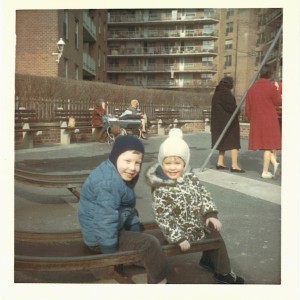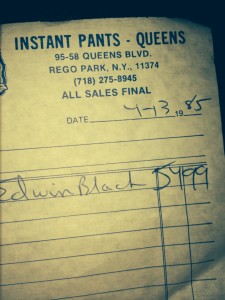It amazes me that in the late 60’s and early 70’s, many common sense laws did not exist in New York City which Queens is part of. When I was five years old, my father decided it was time for me to have some weekly chores. The main chore was buying him cigarettes. Back in 1968, no one batted an eye when a five-year old marched into a store and requested a carton of Kent…with matches! No one asked for ID, called your parents, or thought entrusting a five-year old with enough matches to set a town on fire was an issue. If you were lucky, you would leave the store with not only the cigarettes and matches, but a free piece of Bazooka gum to thank you for your business.
Not only was there no seat belt law back then, but few cars and no school buses even had seat belts. Babies riding in cars were routinely put on adult laps, often in the front seat where that adult could be seen loosely holding the baby with one hand and puffing away on a cigarette with the other. We didn’t have a family car and instead risked our lives riding the New York City subways, but that’s a whole other story. But speaking of subways and lawlessness, many were covered in grafitti for as long as I could remember, until the MTA and government officials finally figured out a way to curtail that (in the 1990’s) and scratchiti became the new trend in defacing public property.
There was no pooper-scooper law and dogs rarely even made it to the nearest tree, fire hydrant, or grassy area. No one in their right mind would have considered carrying a plastic bag to clean up after their dog and they were viewed as “so considerate” if they even tried to guide their dog towards the less traveled areas of the town. As much as I tried to hone my skills in “poop sighting”, it was considered a miracle if you made it through a whole day without stepping in dog shit. After a big snowfall, making a snowball was like Russian roulette since you never knew what might be in that snowball besides snow. Even though poop spottings have dwindled significantly over the past few decades, I am still programmed to always look down and when I do see the occasional pile, I have been known to alert all those in my presence to save them from their misstep.
Equally surprising, there didn’t seem to be any laws about how old a child needed to be before it was considered safe for them to be left alone. I know people who were home alone during their early grade school years. I also became a latchkey kid once I turned ten and my afternoon care was turned over to my older brothers who were sometimes home, sometimes not and when we were all home together, there was usually some sort of fight that only occasionally drew blood. Being a latchkey kid might also explain some of the mischief I got into with my friends alone in an unsupervised house like putting toothpaste on our eyelids just to see what would happen (note to impressionable readers; do not try this at home; it really, really hurts) or eating a full cup of sugar because someone dared me to.
Not only were we left home alone, but adults often assumed we were way more responsible and prepared for adult tasks than we were. When I got a little bit older, my mom would ask me to preheat the oven around 5:45 pm so it would be at the right temperature by 6 pm when she arrived home to start dinner. The chore in itself seems appropriate until I explain the complexity of the family oven. This 1950’s gas wall oven had a pilot way in the back which basically required you to stick your head in the oven with a lit match to ignite the pilot. I guess if a problem had occurred, at least mom would be home within 15 minutes to deal with it.
Perhaps things weren’t all that bad, as I survived all the possible problems that could have ensued from so many opportunities to play with fire without wearing a seat belt. Luckily, I have emerged unscathed and with clean shoes, free of dog shit, to boot.

